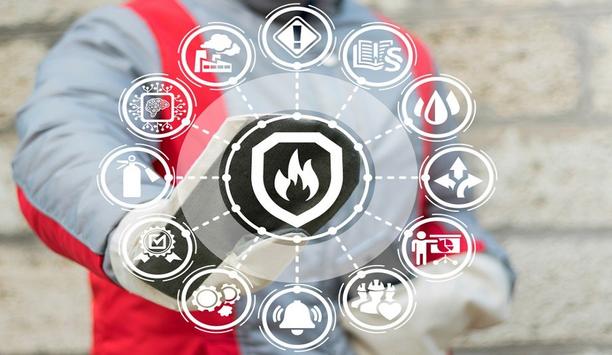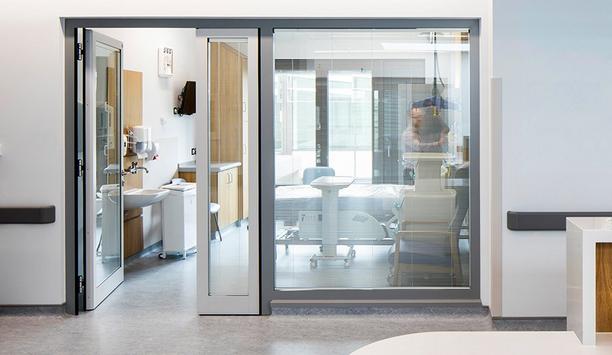During these challenging times, it is more important than ever to protect the supply chain of food, including supermarkets and convenience stores in cities around the world.
On average 3,740 fires occur in food and groceries stores in the US annually, including supermarkets and convenience stores, according to a report published by the NFPA (National Fire Protection Association).
Structure fires in mercantile properties were responsible for the loss of 12 lives and more than $600 million indirect property damages, and this doesn’t account for the cost of business interruption and the effect on the reputation of the store. Many stores haven’t been able to recover after a fire.
The report estimates that a single fire may cost $46,000 on average, which in hindsight is considerably higher than investing in a fire detection system.
The most common causes of fire in supermarkets
It’s important to look at the data from two different perspectives. The first is the number of fires by cause, and the other is to quantify the property loss by cause.
The report estimates that a single fire may cost $46,000 on average
Fires caused by cooking equipment , including stores with kitchens and warming and portable equipment, account for 21% of incidences, but only for just 7% of total property damage and four civilian deaths (firefighter and first responder deaths are registered on a different report).
On the other hand, electrical distribution and lighting equipment malfunctions and defective wiring account for 15% of the total of fires in a given year, but caused $165 million in property loss, or 27% of the total recorded on the report.
It is also important to mention that intentional fires are the third cause reported, accounting for 11% of the total fire incidences and 20% of the property loss highlighted in the report.
Occupation, materials and risks
The kind of store poses a significant variety of risks associated to the type of occupation, the number of occupants and the materials stored and available in the shopping areas. It’s possible to find combustible materials of diverse nature and propagation speed.
Cardboard and paper wrapping can be found in all store areas, including book and magazine stands. Cleaning products, oils and fatty products might have a high propagation speed. All of this, surrounded by different kind of plastics, immensely increase the level of risk.
Overall, combustible liquids caused 41% of the civilian deaths recorded during the report
In my firefighting years I’ve responded to several fires in food supermarkets and distribution centers, and saw tuna cans (canned with oil) exploding and spreading flames to the surrounding areas.
Regarding occupation, it is known that supermarkets and groceries stores are places with high levels of occupation, especially during working hours. But one interesting fact that the report found is that fires occurring between 9pm and 5am can cause, on average, $73,800 in property damage. The NFPA estimates that 21% of human life losses happened between 12am and 3am.
This highlights the importance of installing and maintaining an automatic fire detection system.
Installing fire detection And Protecting Your Store
With the variety of materials and the risk level that can be found in this kind of environment, it’s necessary to take a holistic approach. Fire protection should be designed while considering several angles, from passive protection in all interior and exterior structures and cladding to active protection with sprinkler and clean agent systems, proper ventilation and smoke control and automatic fire detection and evacuation systems.
On average 3,740 fires occur in food and groceries stores in the US annually
Several detection technologies need to work in parallel, depending on the type of products stored, the environment and the expected level of occupation on the protected area. Store height and ventilation need to be taken into consideration and also the kind of lighting in some cases.
Depending on the ceiling height, the shopping floor could be protected with beam smoke detectors. If the ceiling is below six meters, or the store shelves obstruct the beam, it’s possible to use spot type smoke detectors. The same approach can be taken for warehousing and storage areas, but here I would recommend multi-criteria detectors, with heat and smoke detection combined.
localized protection
As I’ve mentioned before, cooking areas have an increased level of risk, which calls for localized protection. Here, I would recommend multi-criteria (smoke/heat) detectors for areas where food is heated and served, and smoke/heat/Carbon monoxide detectors on cooking areas to avoid nuisance alarms caused by cooking smoke and steam. It’s important to mention that until this year it was possible to install heat detection in cooking areas, but the UL 268 7th edition that comes into effect in 2021 will require cooking areas to be protected with smoke detection, and smoke detectors have to be able to reject nuisance alarms caused by cooking smoke and steam.
Smaller supermarkets and convenience stores usually have vertical freezers or horizontal open freezers. Here, electrical and mechanical failures can ignite fires, which is why it is important to protect the rear side of the freezers. I would recommend point-type smoke detectors, as photoelectric smoke detectors tend to perform better on smoldering fires.
The report mentions that air conditioning equipment and electrical equipment can be sources of ignition as well. To protect A/C rooms and electrical rooms I would recommend combined smoke/heat detectors, or maybe even smoke/heat/CO to assure better detection and avoid unwanted alarms in these business critical areas.
There is a type of photoelectric smoke detector that uses two different LED sources inside the smoke chamber. This technology, called Dual-Ray, allows the smoke detector to identify the particles inside the chamber by size. The detector knows if it is sensing dust or steam, and can even differentiate between cooking or cigarette smoke from actual smoke from a smoldering fire. Bosch Building Technologies first introduced dual Ray technology in 2015.
protecting the food supply chain
During these challenging times, it’s more important than ever to protect the food supply chain and avoid the social and economic impact of fires in food stores, especially in impoverished areas. Supermarkets and convenience stores present a variety of challenges regarding fire protection, which calls for a holistic approach where passive and active protection are equally important.
To achieve this target, one key element is automatic fire detection. Smoke and heat sensing technologies must be combined, and one size-fits-all approach is not enough. Detection and effective evacuation are critical to protect lives and minimize property loss.




















